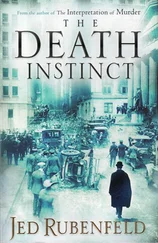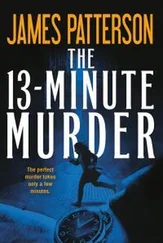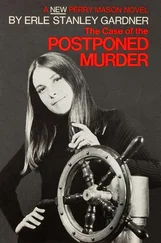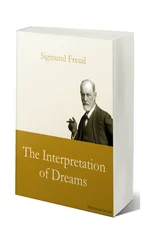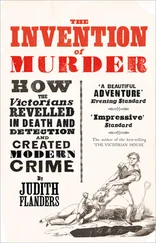Jed Rubenfeld - The Interpretation of Murder
Здесь есть возможность читать онлайн «Jed Rubenfeld - The Interpretation of Murder» весь текст электронной книги совершенно бесплатно (целиком полную версию без сокращений). В некоторых случаях можно слушать аудио, скачать через торрент в формате fb2 и присутствует краткое содержание. Жанр: Исторические приключения, на английском языке. Описание произведения, (предисловие) а так же отзывы посетителей доступны на портале библиотеки ЛибКат.
- Название:The Interpretation of Murder
- Автор:
- Жанр:
- Год:неизвестен
- ISBN:нет данных
- Рейтинг книги:5 / 5. Голосов: 1
-
Избранное:Добавить в избранное
- Отзывы:
-
Ваша оценка:
- 100
- 1
- 2
- 3
- 4
- 5
The Interpretation of Murder: краткое содержание, описание и аннотация
Предлагаем к чтению аннотацию, описание, краткое содержание или предисловие (зависит от того, что написал сам автор книги «The Interpretation of Murder»). Если вы не нашли необходимую информацию о книге — напишите в комментариях, мы постараемся отыскать её.
The Interpretation of Murder — читать онлайн бесплатно полную книгу (весь текст) целиком
Ниже представлен текст книги, разбитый по страницам. Система сохранения места последней прочитанной страницы, позволяет с удобством читать онлайн бесплатно книгу «The Interpretation of Murder», без необходимости каждый раз заново искать на чём Вы остановились. Поставьте закладку, и сможете в любой момент перейти на страницу, на которой закончили чтение.
Интервал:
Закладка:
Jed Rubenfeld
The Interpretation of Murder
In 1909, Sigmund Freud, accompanied by his then disciple Carl Jung, made his one and only visit to the United States, to deliver a series of lectures on psychoanalysis at Clark University, in Worcester, Massachusetts. The honorary doctoral degree that Clark awarded him was the first public recognition Freud had ever received for his work. Despite the great success of this visit, Freud always spoke, in later years, as if some trauma had befallen him in the United States. He called Americans 'savages' and blamed his sojourn there for physical ailments that afflicted him well before 1909. Freud's biographers have long puzzled over this mystery, speculating whether some unknown event in America could have led to his otherwise inexplicable reaction.
Part 1
Chapter One
There is no mystery to happiness.
Unhappy men are all alike. Some wound they suffered long ago, some wish denied, some blow to pride, some kindling spark of love put out by scorn — or worse, indifference — cleaves to them, or they to it, and so they live each day within a shroud of yesterdays. The happy man does not look back. He doesn't look ahead. He lives in the present.
But there's the rub. The present can never deliver one thing: meaning. The ways of happiness and meaning are not the same. To find happiness, a man need only live in the moment; he need only live for the moment. But if he wants meaning — the meaning of his dreams, his secrets, his life — a man must reinhabit his past, however dark, and live for the future, however uncertain. Thus nature dangles happiness and meaning before us all, insisting only that we choose between them.
For myself, I have always chosen meaning. Which, I suppose, is how I came to be waiting in the swelter and mob of Hoboken harbor on Sunday evening, August 29, 1909, for the arrival of the Norddeutsche Lloyd steamship George Washington, bound from Bremen, carrying to our shores the one man in the world I wanted most to meet.
At 7 p.m. there was still no sign of the ship. Abraham Brill, my friend and fellow physician, was waiting at the harbor for the same reason as I. He could hardly contain himself, fidgeting and smoking incessantly. The heat was murderous, the air thick with the reek of fish. An unnatural fog rose from the water, as if the sea were steaming. Horns sounded heavily out in the deeper water, their sources invisible. Even the keening gulls could be only heard, not seen. A ridiculous premonition came to me that the George Washington had run aground in the fog, her twenty-five hundred European passengers drowning at the foot of the Statue of Liberty. Twilight came, but the temperature did not abate. We waited.
All at once, the vast white ship appeared — not as a dot on the horizon, but mammoth, emerging from the mist fullblown before our eyes. The entire pier, with a collective gasp, drew back at the apparition. But the spell was broken by the outbreak of harbormen's cries, the flinging and catching of rope, the bustle and jostle that followed. Within minutes, a hundred stevedores were unloading freight.
Brill, yelling at me to follow, shouldered through to the gangway. His entreaties to board were rebuffed; no one was being let on or off the ship. It was another hour before Brill yanked at my sleeve and pointed to three passengers descending the bridge. The first of the trio was a distinguished, immaculately groomed, gray-haired, and gray-bearded gentleman whom I knew at once to be the Viennese psychiatrist Dr Sigmund Freud.
At the beginning of the twentieth century, an architectural paroxysm shook New York City. Gigantic towers called skyscrapers soared up one after the other, higher than anything built by the hand of man before. At a ribbon- cutting on Liberty Street in 1908, the top hats applauded as Mayor McClellan declared the forty-seven-story redbrick and bluestone Singer Building the world's tallest structure. Eighteen months later, the mayor had to repeat the same ceremony at the fifty-story Metropolitan Life tower on Twenty-fourth Street. But even then, they were already breaking ground for Mr Woolworth's staggering fifty-eight-story ziggurat back downtown.
On every block, enormous steel-beam skeletons appeared where empty lots had been the day before. The smash and scream of steam shovels never ceased. The only comparison was with Haussmann s transformation of Paris a half century earlier, but in New York there was no single vision behind the scenes, no unifying plan, no disciplining authority. Capital and speculation drove everything, releasing fantastic energies, distinctly American and individualistic.
The masculinity of it all was undeniable. On the ground, the implacable Manhattan grid, with its two hundred numbered east-west streets and twelve north-south avenues, gave the city a stamp of abstract rectilinear order. Above this, in the immensity of the towering structures, with their peacock-like embellishments, it was all ambition, speculation, competition, domination, even lust — for height, size, and always money
The Balmoral, on the Boulevard — New Yorkers at the time referred to Broadway from Fifty-ninth to 155th Street as the Boulevard — was one of the grand new edifices. Its very existence was a gamble. In 1909, the very rich still lived in houses, not apartments. They 'kept' apartments for short or seasonal stays in the city, but they failed to comprehend how anybody could actually live in one. The Balmoral was a bet: that the rich could be induced to change their minds if the accommodations were sufficiently opulent.
The Balmoral rose seventeen stories, higher and grander than any apartment building — any residential building — had ever climbed before. Its four wings occupied an entire city block. Its lobby, where seals cavorted in a Roman fountain, shone with white Carrera marble. Chandeliers in every apartment sparkled with Murano glass. The smallest dwelling had eight rooms; the largest boasted fourteen bedrooms, seven baths, a grand ballroom with a twenty-foot ceiling, and full maid's service. This rented for the appalling sum of $495 a month.
The owner of the Balmoral, Mr George Banwell, enjoyed the enviable position of being unable to lose money on it. His investors had advanced $6,000,000 toward its construction, of which he had kept not a penny, scrupulously remitting the entire amount to the builder, the American Steel and Fabrication Company. The owner of this firm, however, was also Mr George Banwell, and the actual construction cost was $4,200,000. On January 1, 1909, six months before the Balmoral was to open, Mr Banwell announced that all but two of the apartments were already let. The announcement was pure invention, but it was believed, and therefore within three weeks it was so. Mr Banwell had mastered the great truth that truth itself, like buildings, can be manufactured.
The Balmoral's exterior belonged to the Beaux-Arts school at its most flamboyant. Crowning the roofline were a quartet of thirteen-foot floor-to-ceiling glass-paned concrete arches, one at each corner of the property. Because these great arched windows gave off the top floor's four master bedrooms, someone standing outside them could have had a very compromising view inside. On Sunday night, August 29, the view from outside the Alabaster Wing would have been shocking indeed. A slender young woman was standing within, lit by a dozen flickering candles, barely clothed, exquisitely proportioned, her wrists tied together over her head, and her throat embraced by another binding, a man's white silk tie, which a strong hand was making tight, exceedingly tight, causing her to choke.
Her entire body glistened in the unbearable August heat. Her long legs were bare, as were her arms. Her elegant shoulders were nearly bare as well. The girl's consciousness was fading. She tried to speak. There was a question she had to ask. It was there; it was gone. Then she had it again. 'My name,' she whispered. 'What is my name?'
Читать дальшеИнтервал:
Закладка:
Похожие книги на «The Interpretation of Murder»
Представляем Вашему вниманию похожие книги на «The Interpretation of Murder» списком для выбора. Мы отобрали схожую по названию и смыслу литературу в надежде предоставить читателям больше вариантов отыскать новые, интересные, ещё непрочитанные произведения.
Обсуждение, отзывы о книге «The Interpretation of Murder» и просто собственные мнения читателей. Оставьте ваши комментарии, напишите, что Вы думаете о произведении, его смысле или главных героях. Укажите что конкретно понравилось, а что нет, и почему Вы так считаете.





